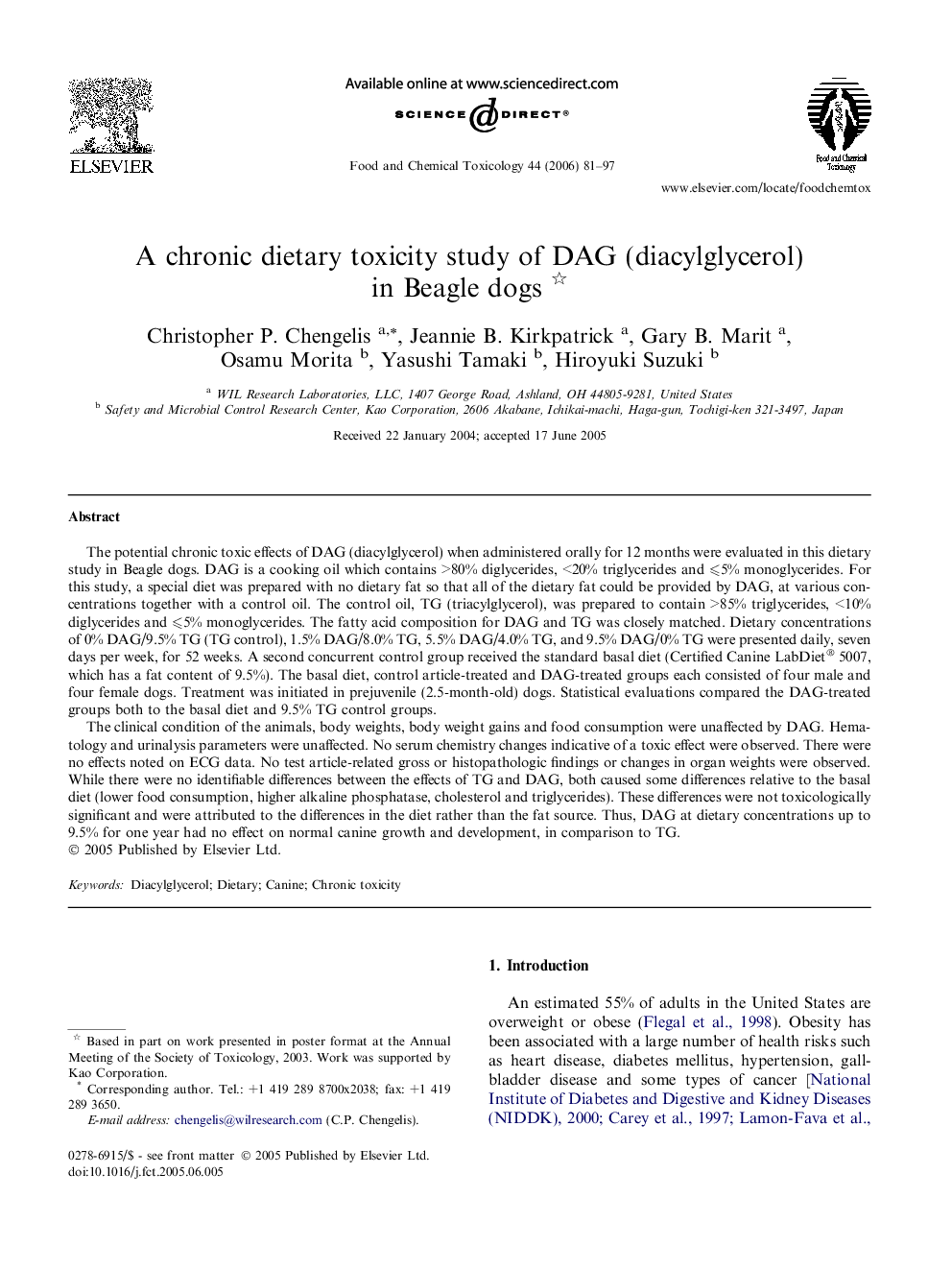| کد مقاله | کد نشریه | سال انتشار | مقاله انگلیسی | نسخه تمام متن |
|---|---|---|---|---|
| 2588237 | 1130958 | 2006 | 17 صفحه PDF | دانلود رایگان |

The potential chronic toxic effects of DAG (diacylglycerol) when administered orally for 12 months were evaluated in this dietary study in Beagle dogs. DAG is a cooking oil which contains >80% diglycerides, <20% triglycerides and ⩽5% monoglycerides. For this study, a special diet was prepared with no dietary fat so that all of the dietary fat could be provided by DAG, at various concentrations together with a control oil. The control oil, TG (triacylglycerol), was prepared to contain >85% triglycerides, <10% diglycerides and ⩽5% monoglycerides. The fatty acid composition for DAG and TG was closely matched. Dietary concentrations of 0% DAG/9.5% TG (TG control), 1.5% DAG/8.0% TG, 5.5% DAG/4.0% TG, and 9.5% DAG/0% TG were presented daily, seven days per week, for 52 weeks. A second concurrent control group received the standard basal diet (Certified Canine LabDiet® 5007, which has a fat content of 9.5%). The basal diet, control article-treated and DAG-treated groups each consisted of four male and four female dogs. Treatment was initiated in prejuvenile (2.5-month-old) dogs. Statistical evaluations compared the DAG-treated groups both to the basal diet and 9.5% TG control groups.The clinical condition of the animals, body weights, body weight gains and food consumption were unaffected by DAG. Hematology and urinalysis parameters were unaffected. No serum chemistry changes indicative of a toxic effect were observed. There were no effects noted on ECG data. No test article-related gross or histopathologic findings or changes in organ weights were observed. While there were no identifiable differences between the effects of TG and DAG, both caused some differences relative to the basal diet (lower food consumption, higher alkaline phosphatase, cholesterol and triglycerides). These differences were not toxicologically significant and were attributed to the differences in the diet rather than the fat source. Thus, DAG at dietary concentrations up to 9.5% for one year had no effect on normal canine growth and development, in comparison to TG.
Journal: Food and Chemical Toxicology - Volume 44, Issue 1, January 2006, Pages 81–97